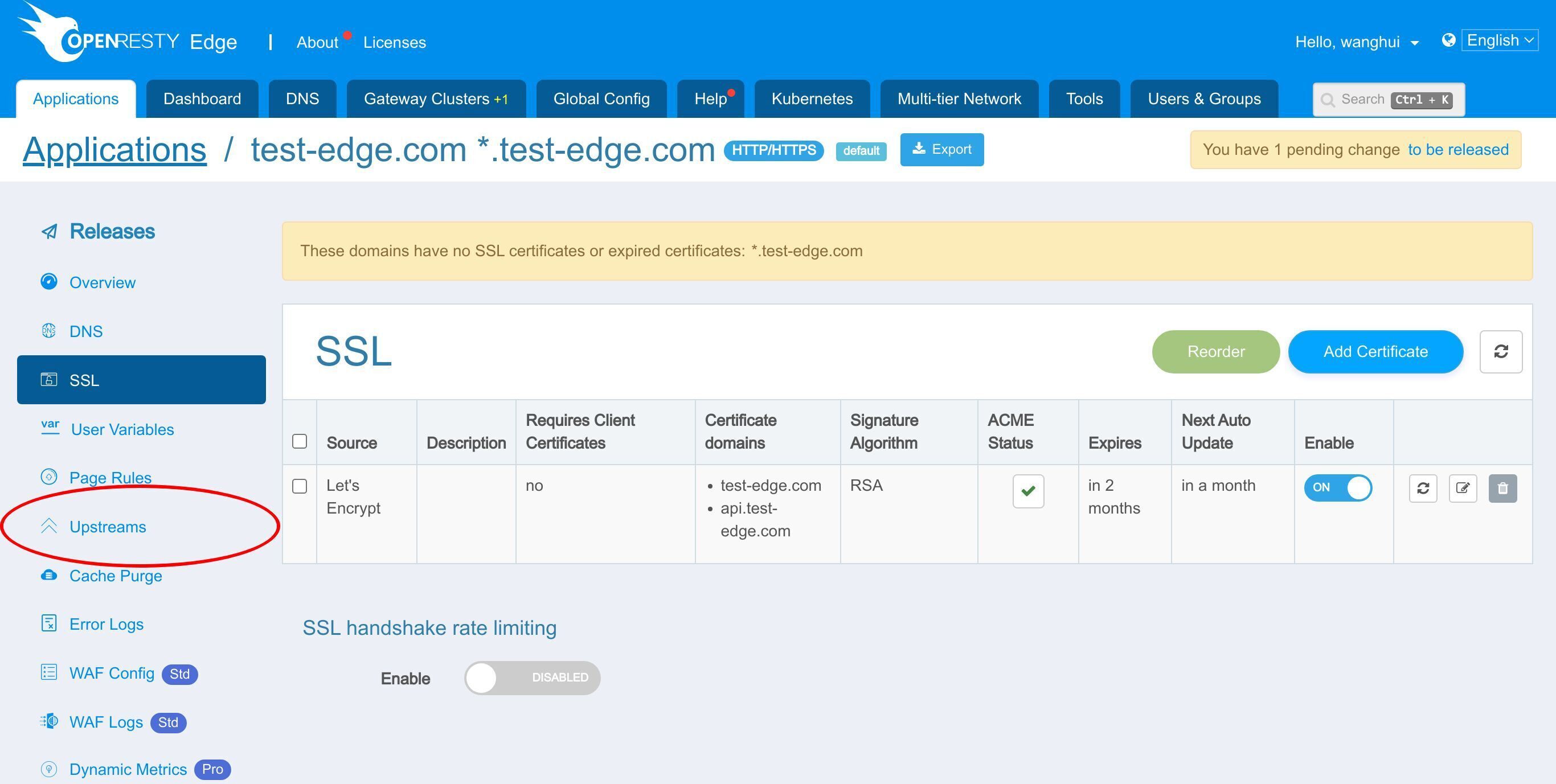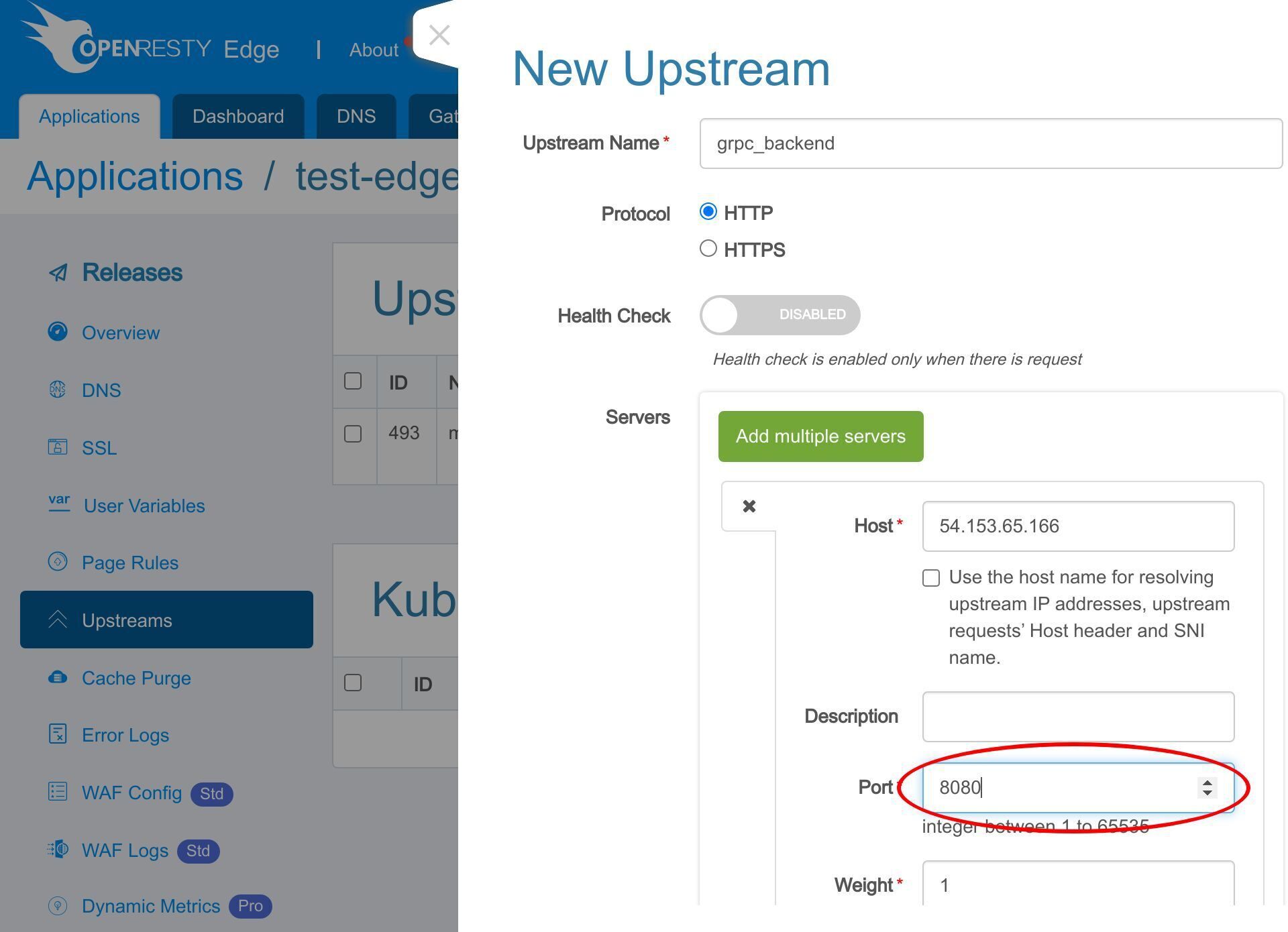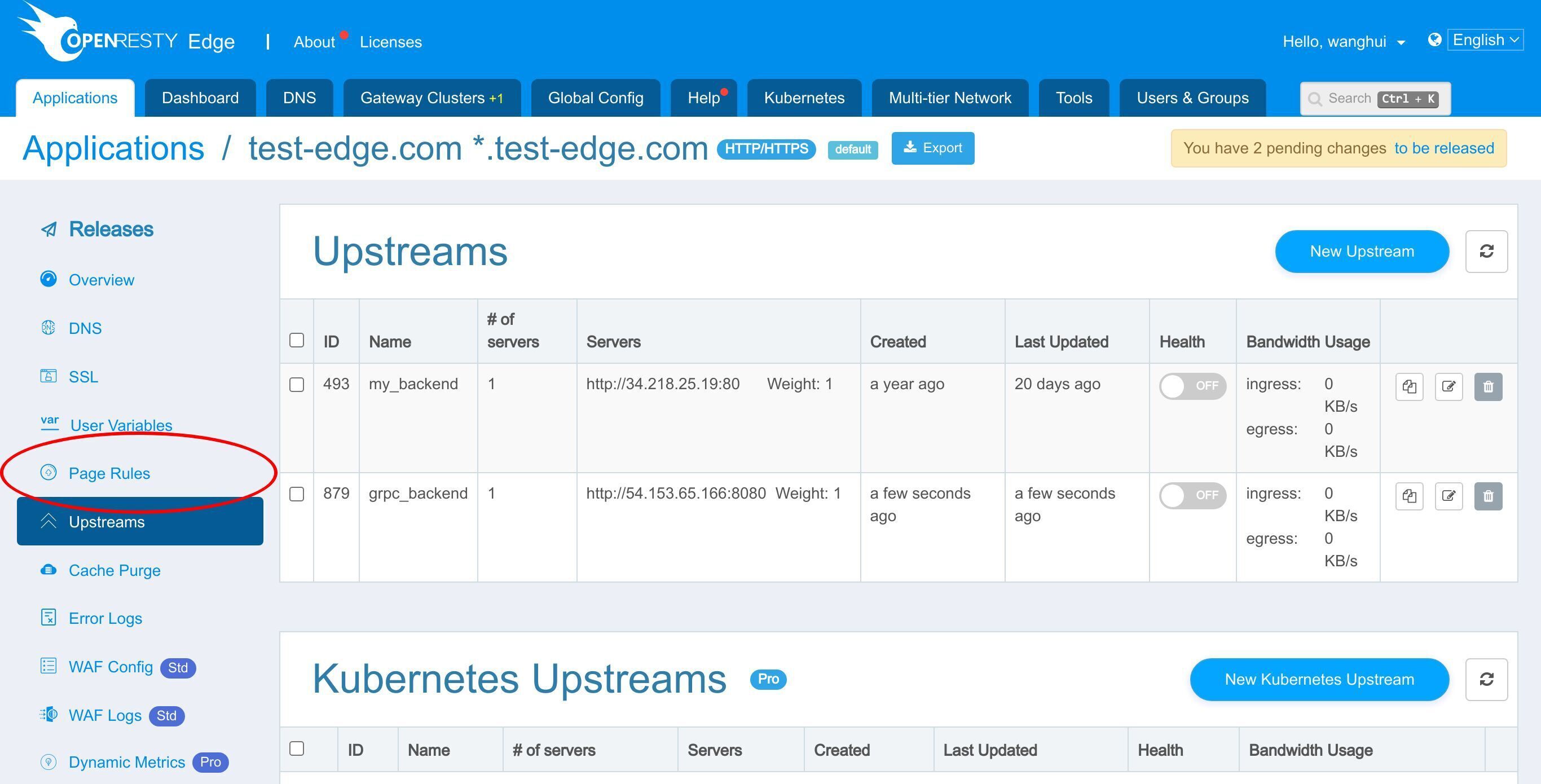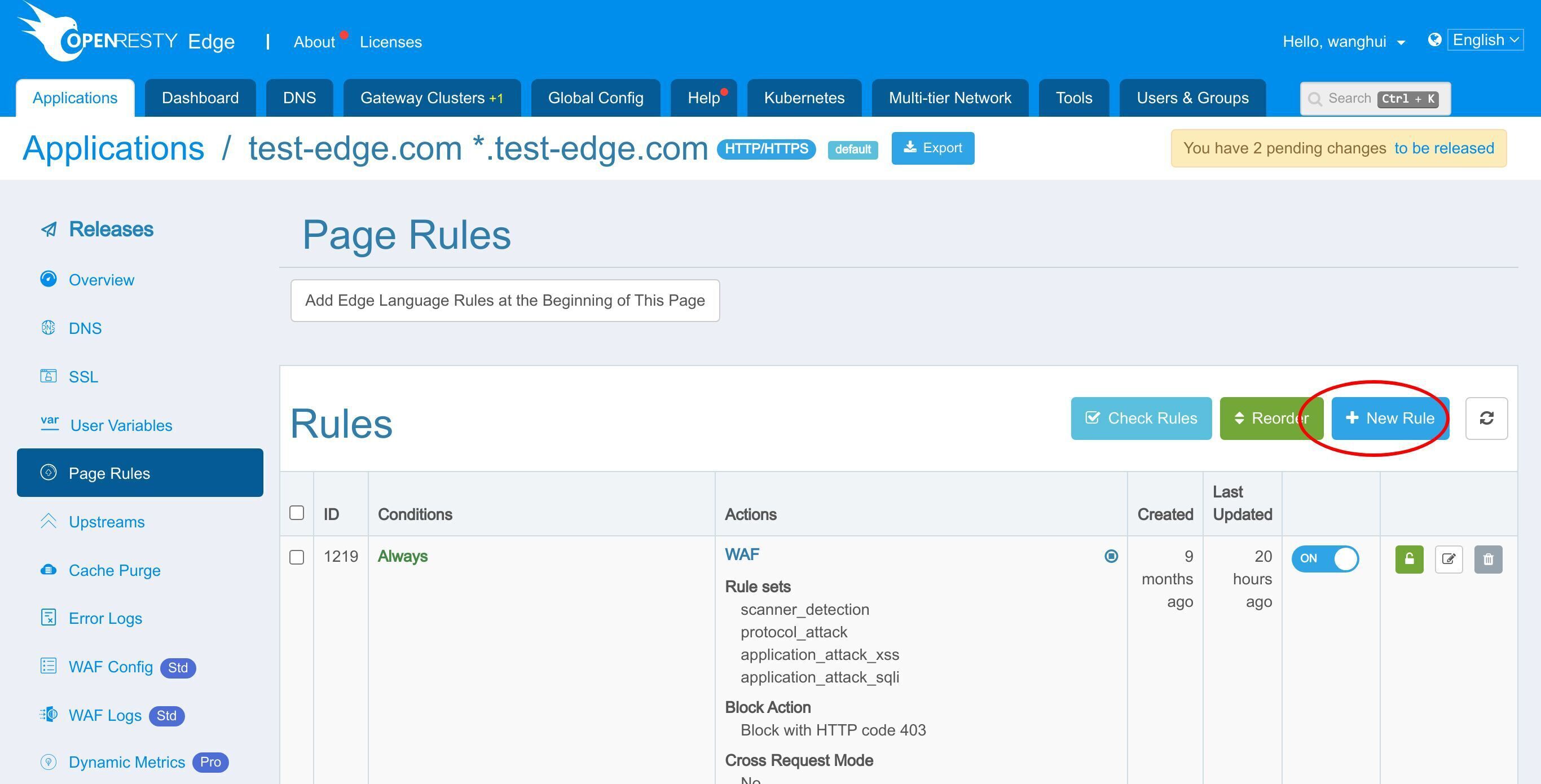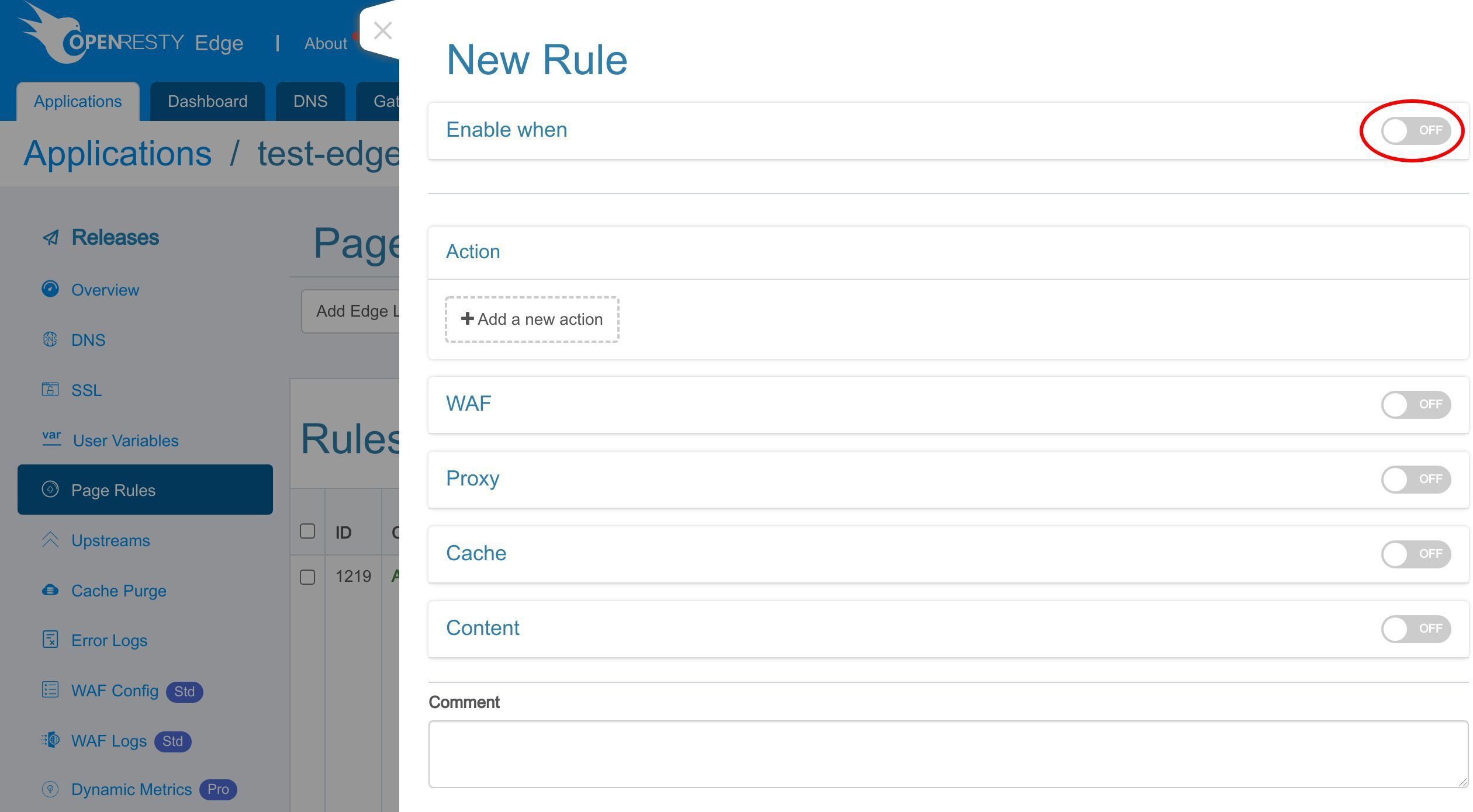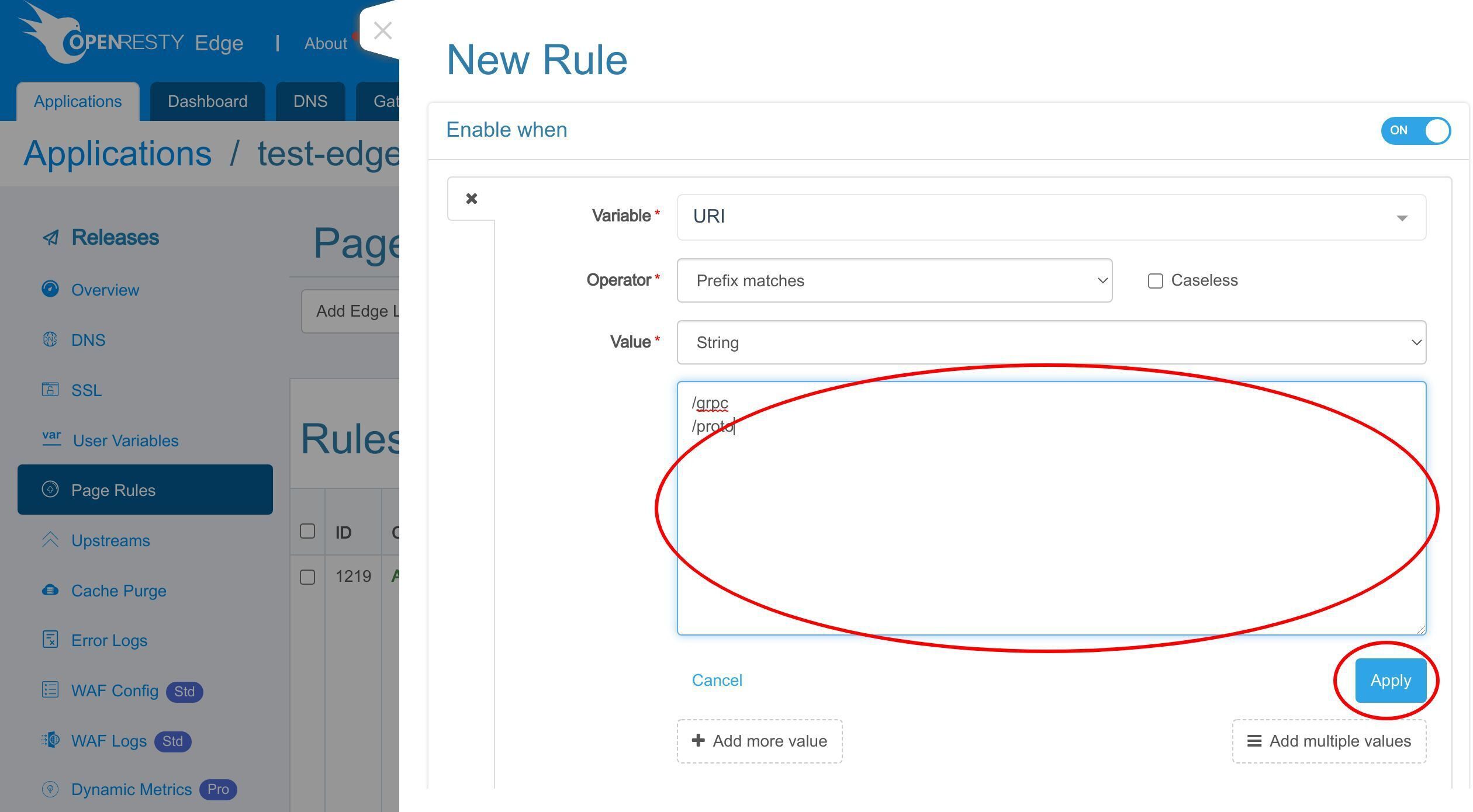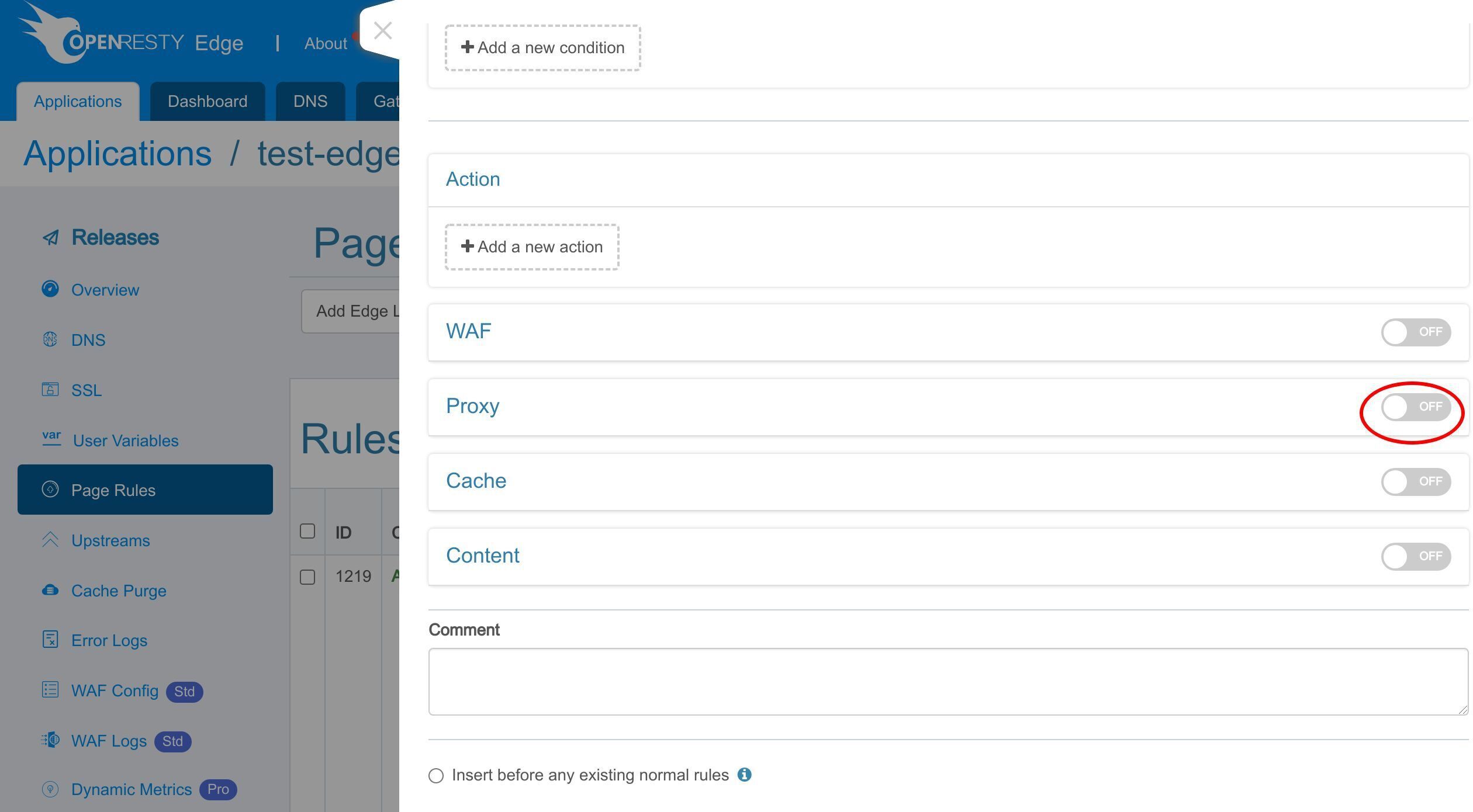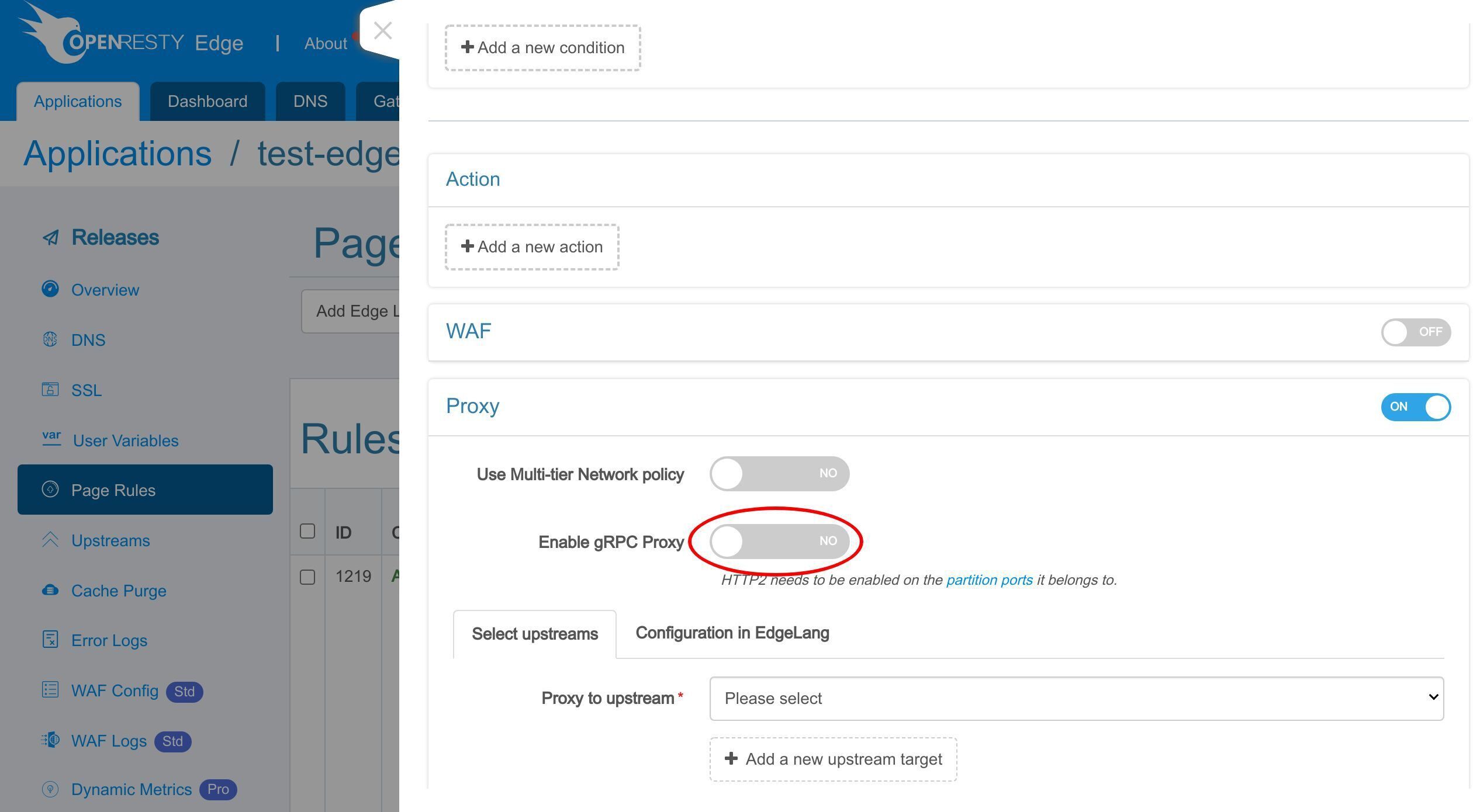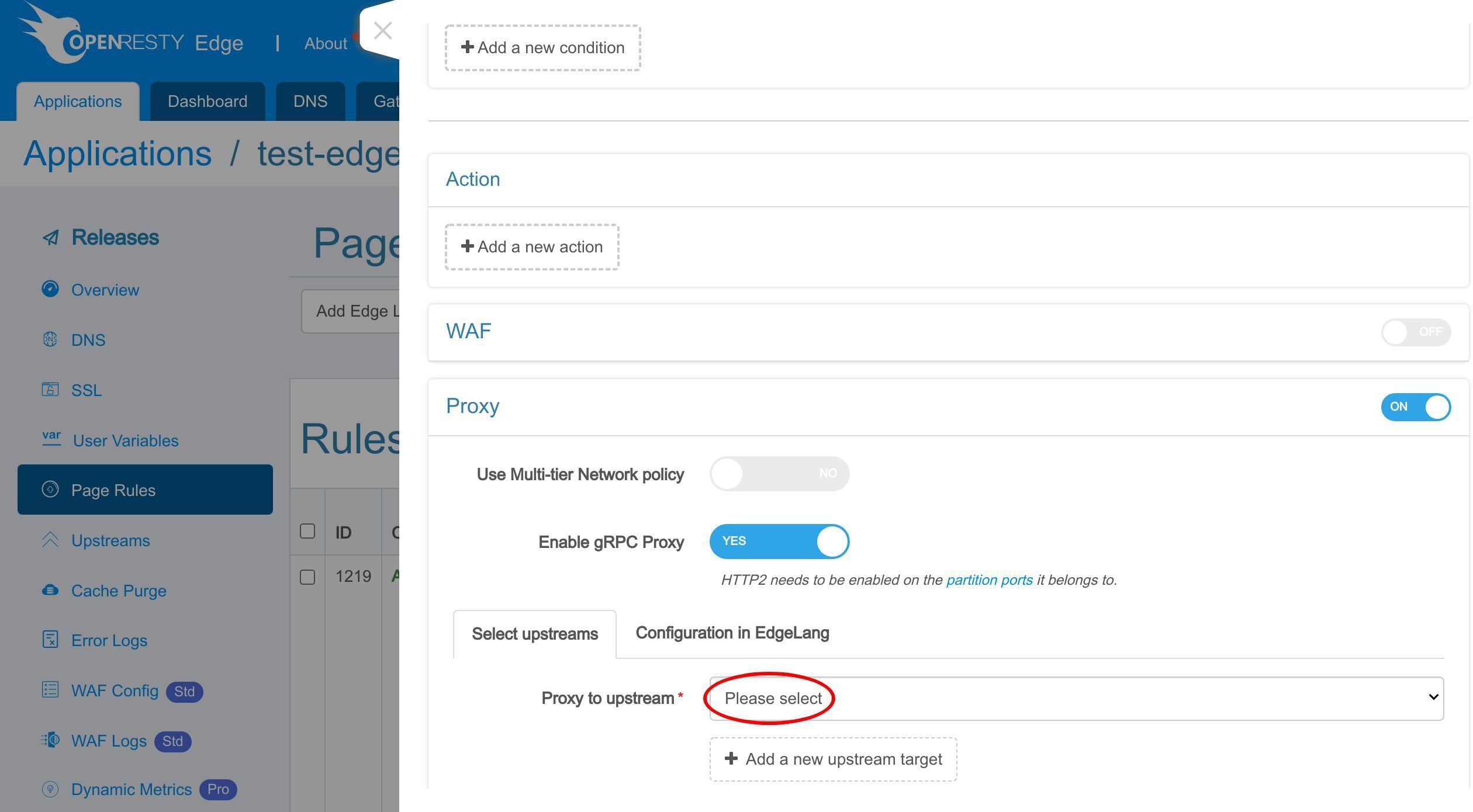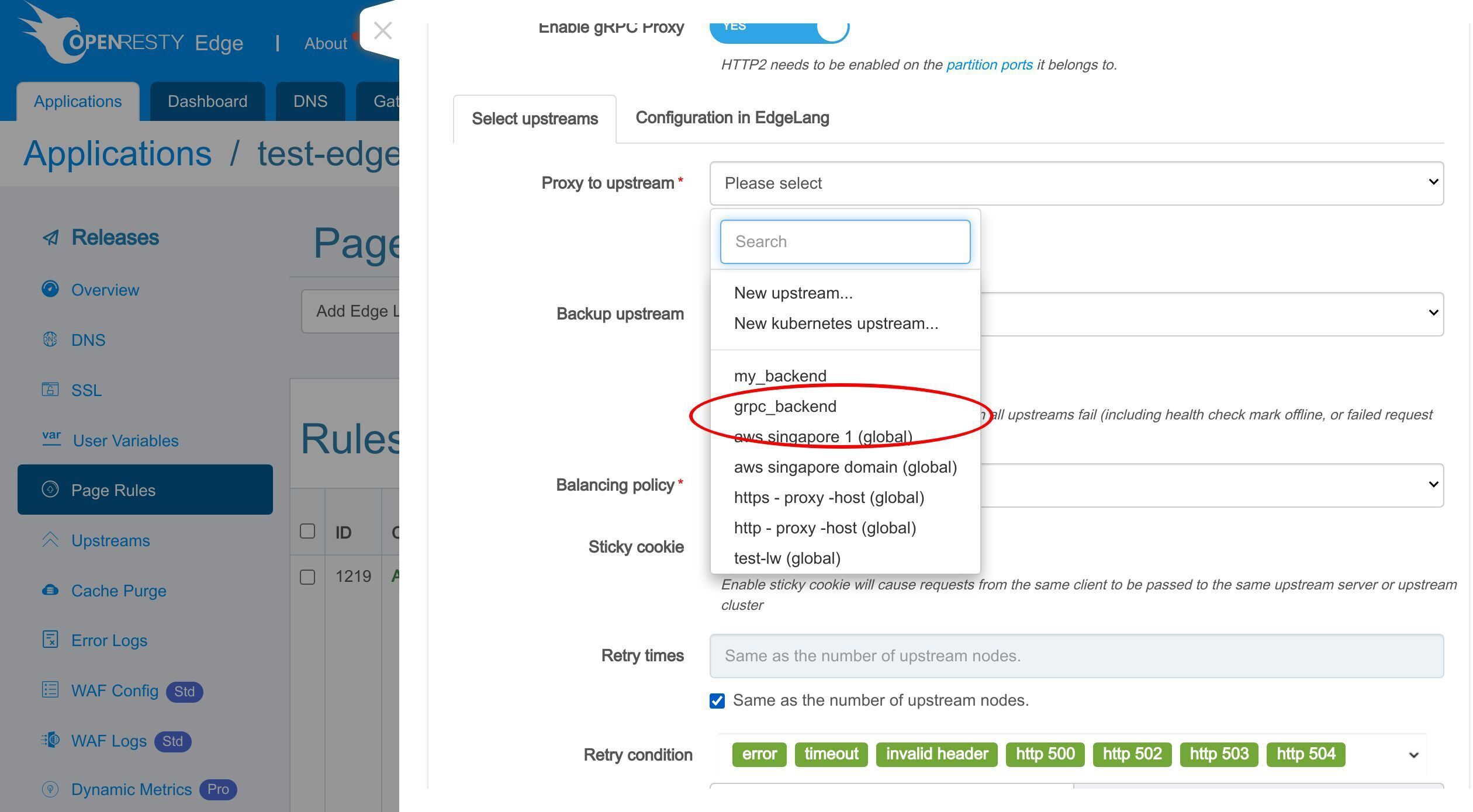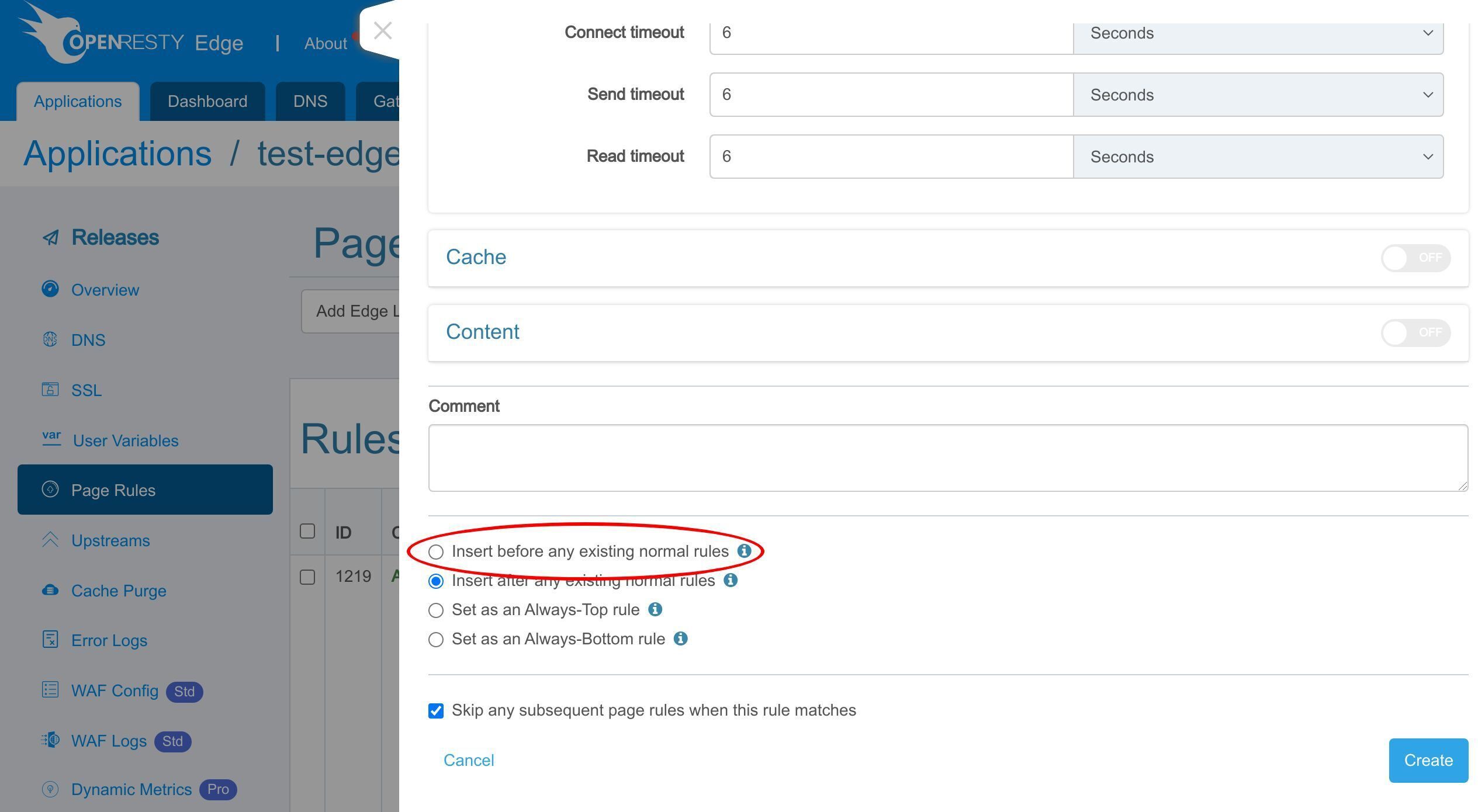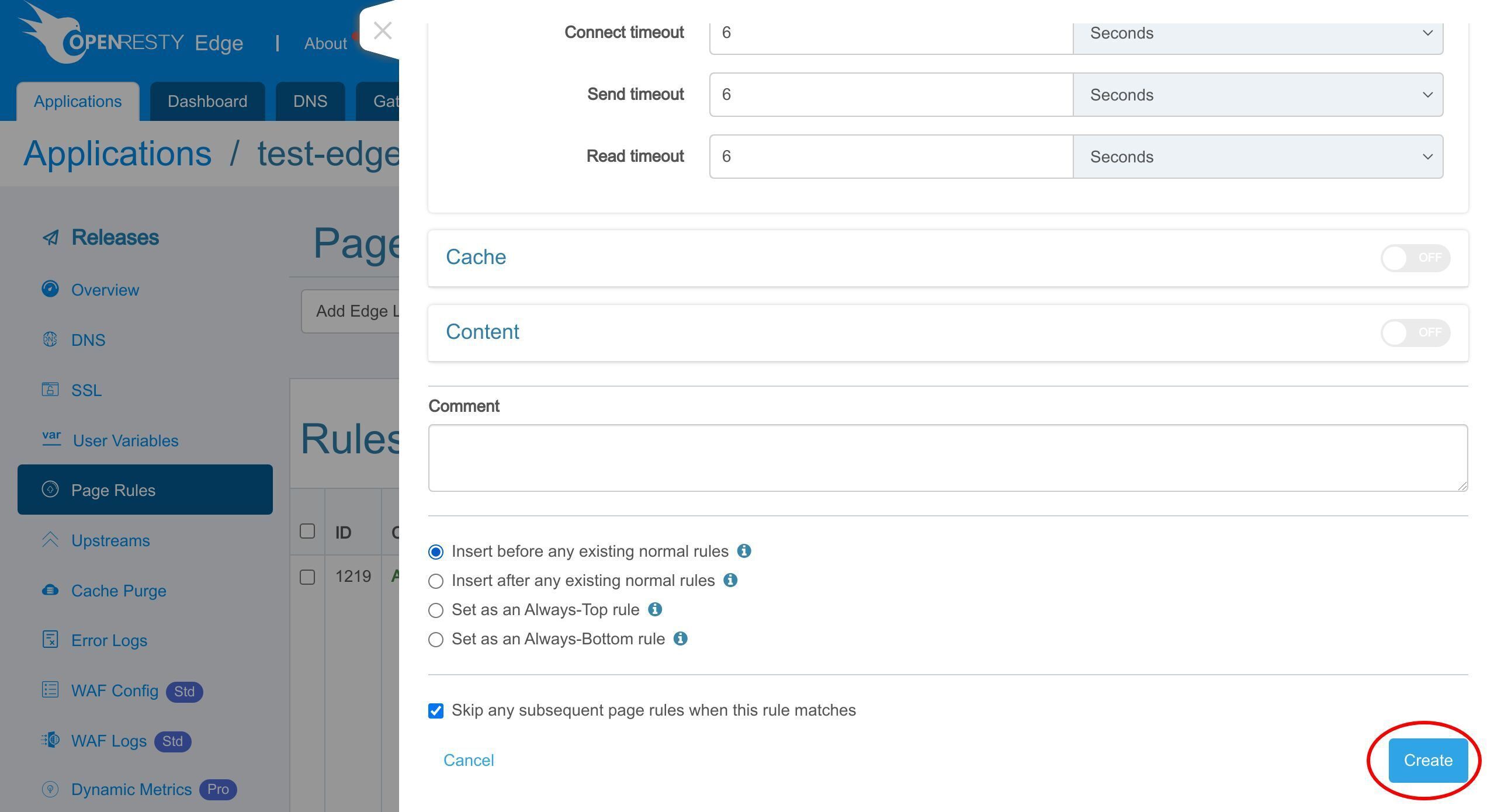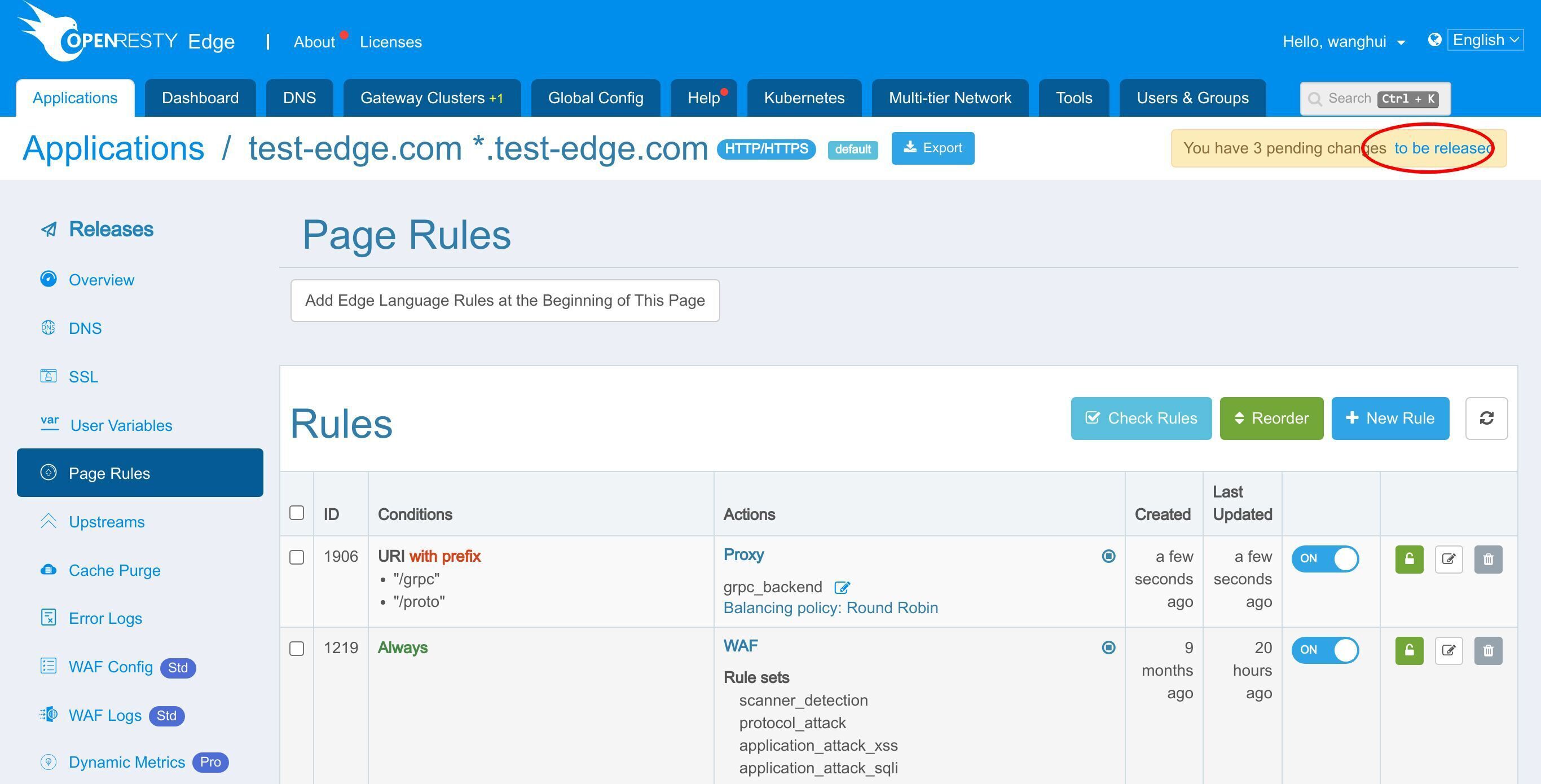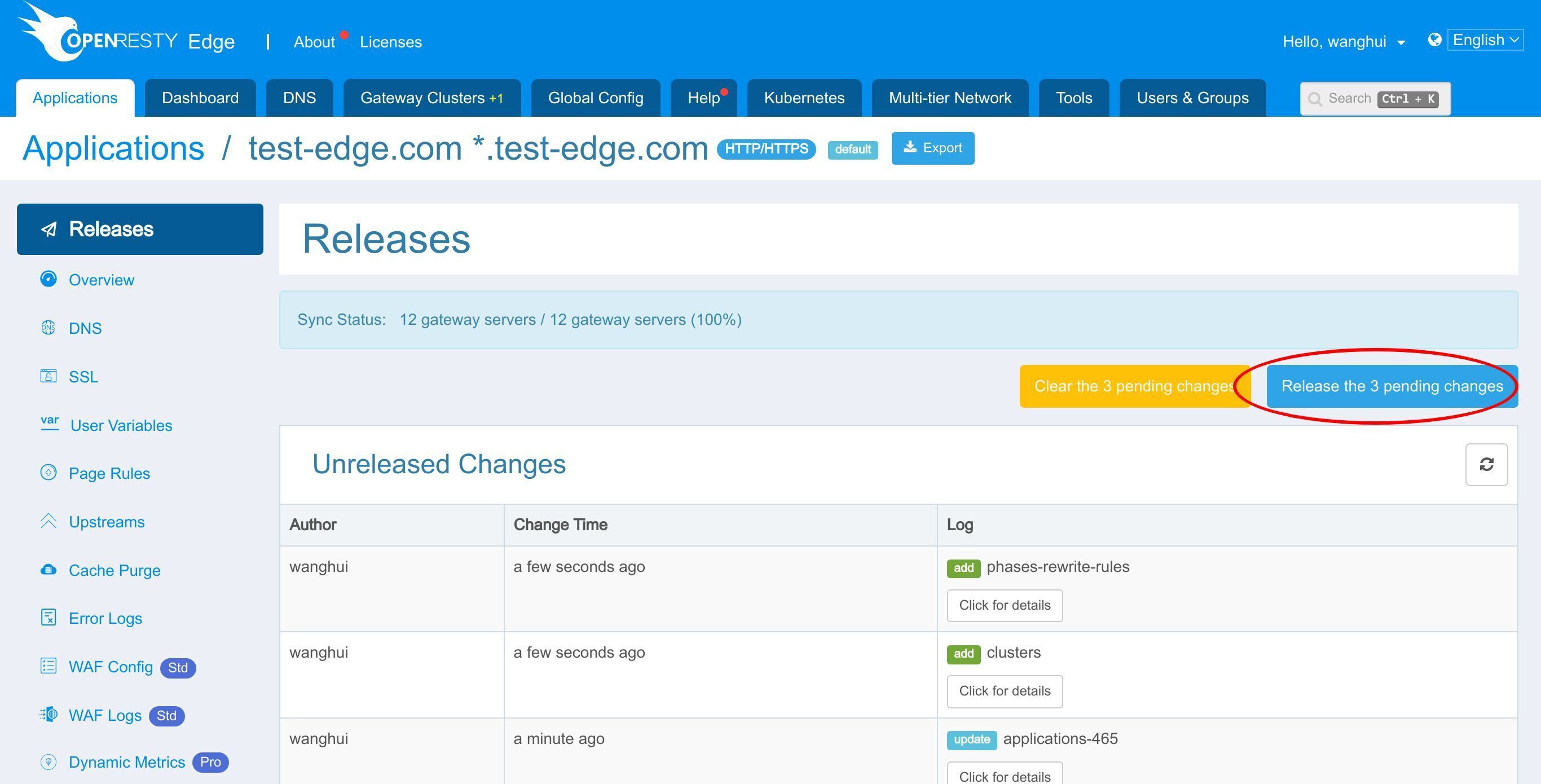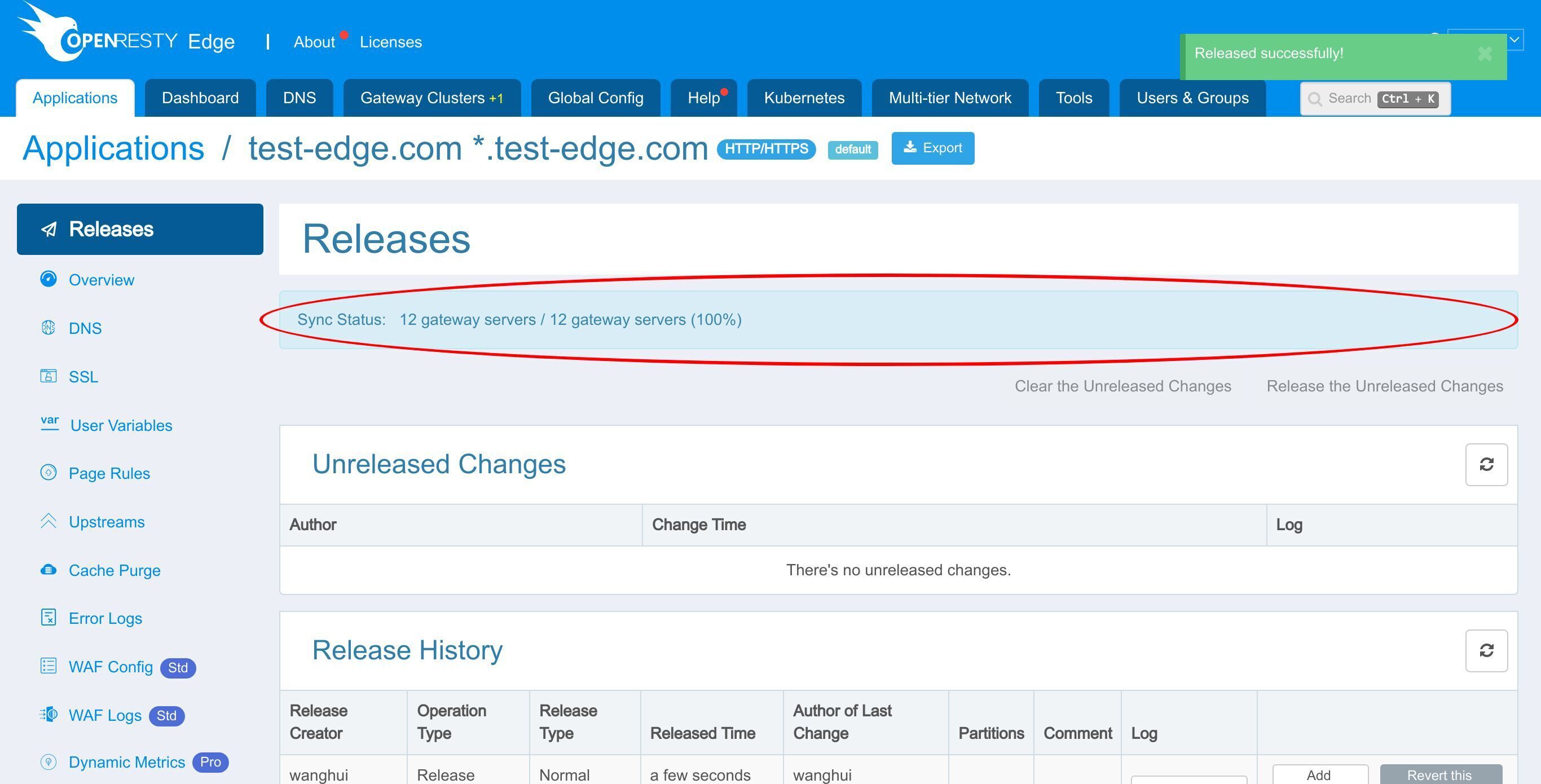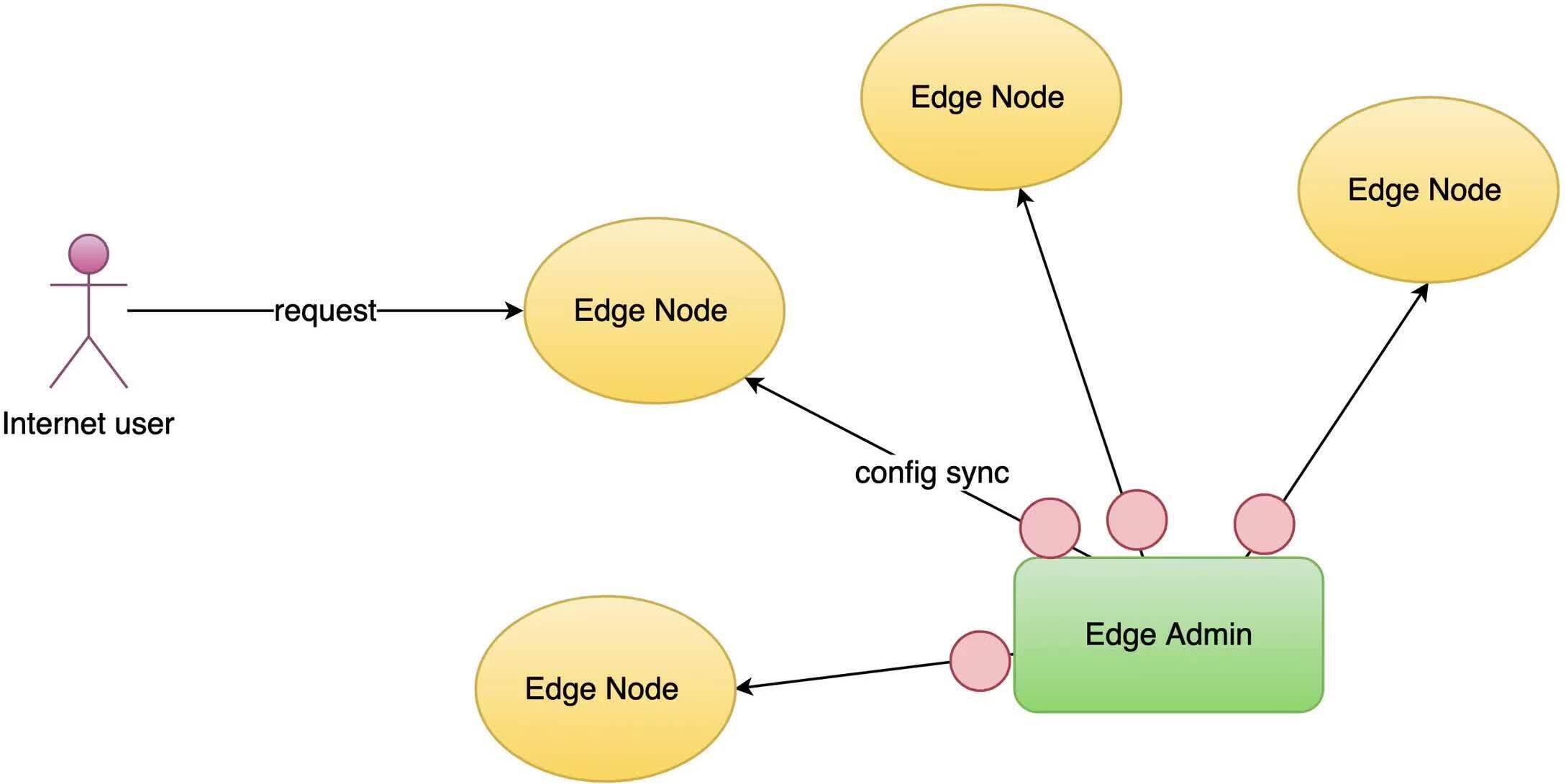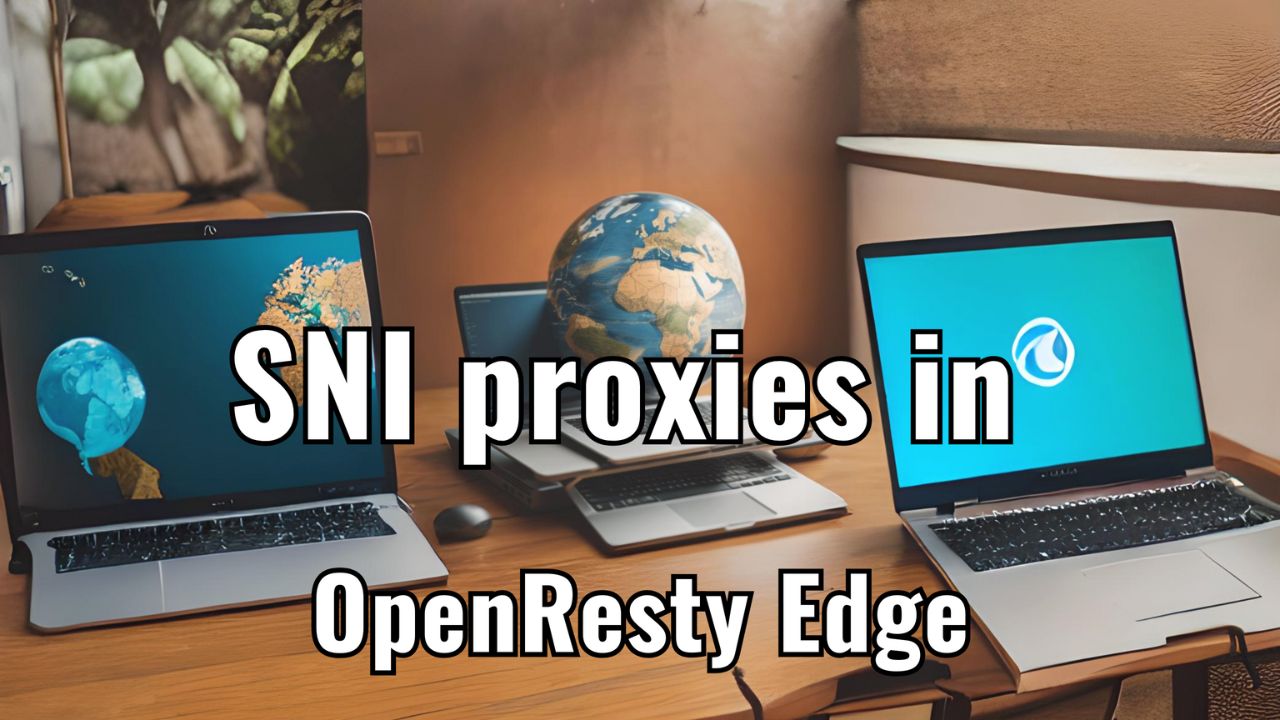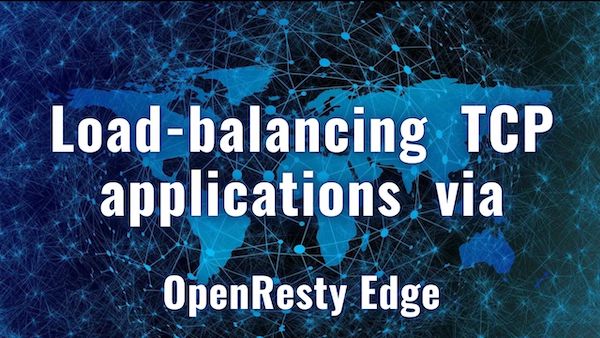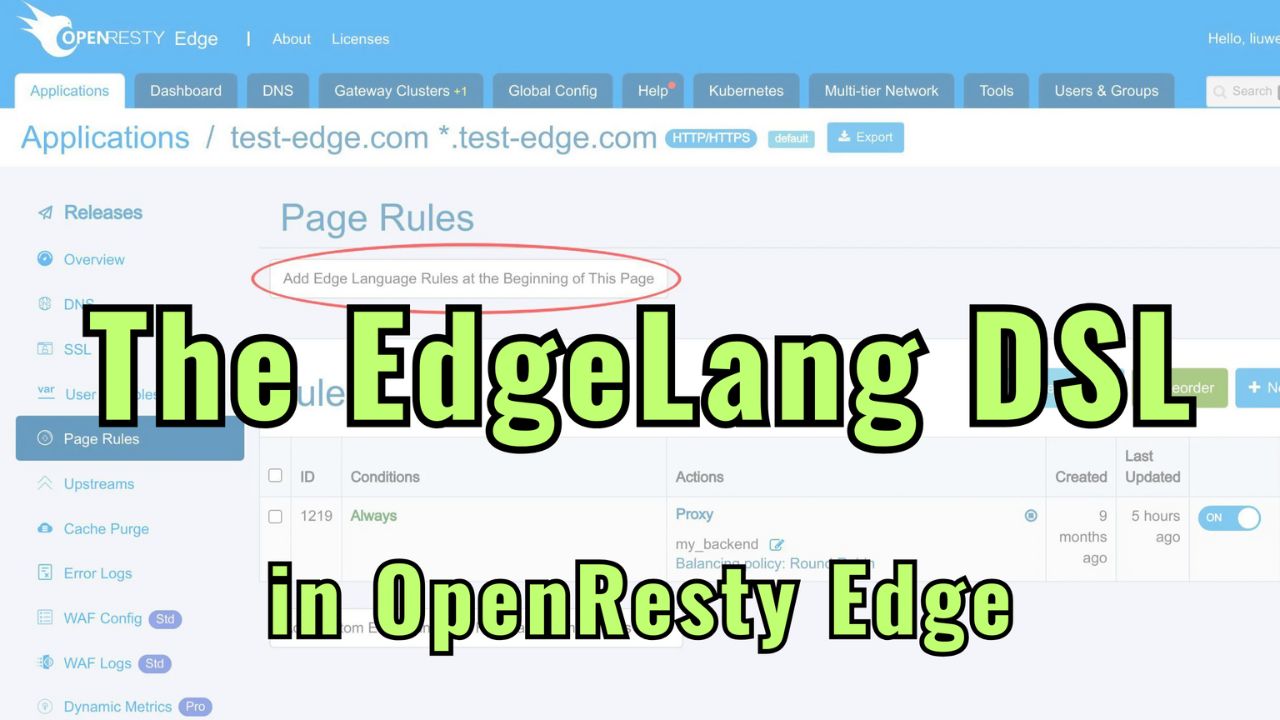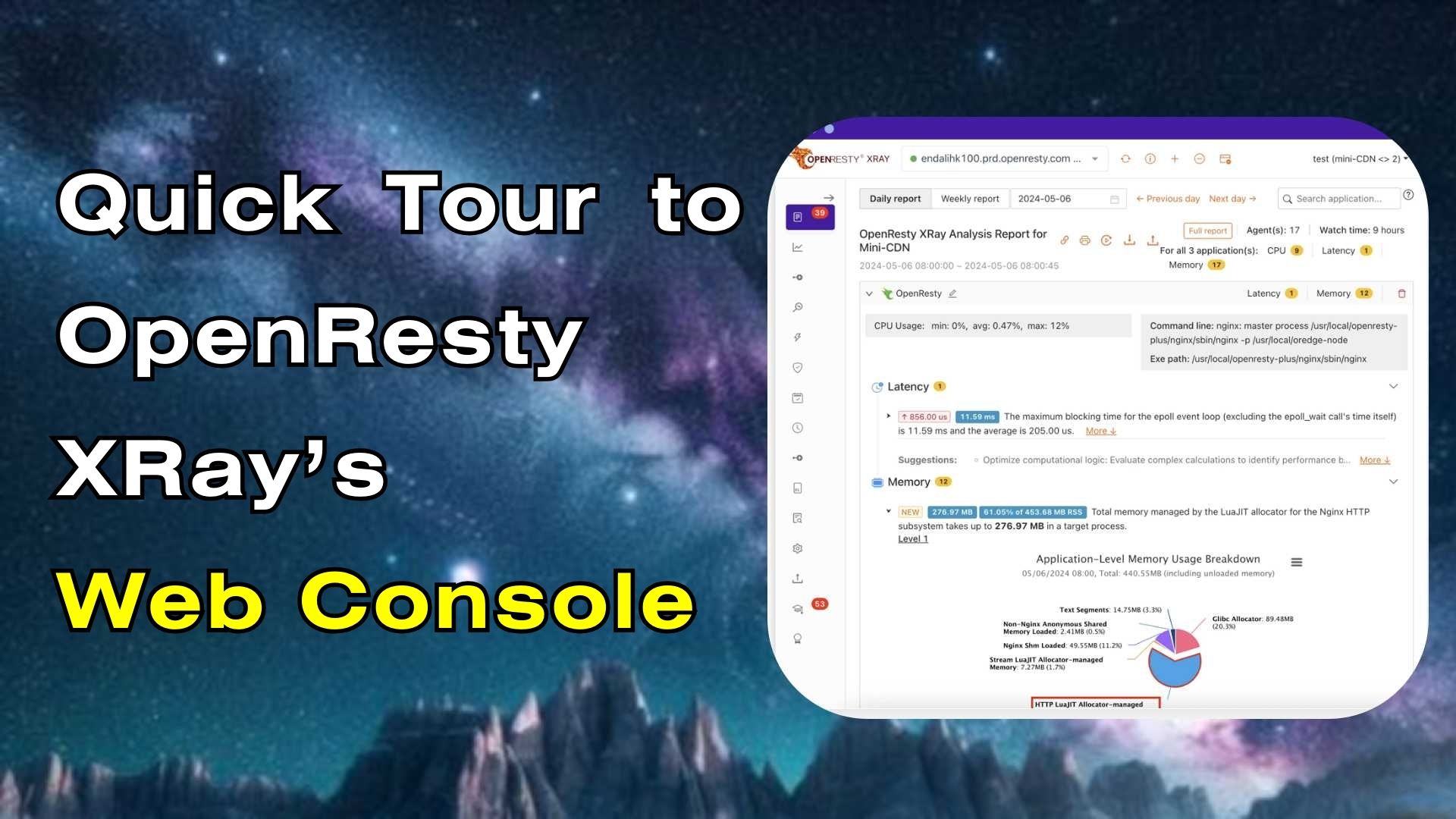Configure distributed gRPC proxy in OpenResty Edge
Today I’ll demonstrate how to set up a gRPC reverse proxy and load balancer in OpenResty Edge.
gRPC sample server and sample service
We’ve prepared a sample gRPC backend server. The IP address of the backend ends with .166. And it’s listening on port 8080.
Here is the protobuf definition file for the sample gRPC service.
cat hello_world.proto
This service returns a welcome message based on the name parameter.
We can use the grpcurl command-line utility to check this service output. This tool can send gRPC requests and then show any received responses in the JSON format. We use the “plaintext” option here since our gRPC server does not support SSL/TLS encryption. We pass “world” as the value of the name parameter. We then enter the address of the gRPC server mentioned above. And finally, enter the gRPC service name.
Send the request.
We can see that the message “hello world” is returned, as expected.
Use the gRPC server as an upstream
Next, we will use this gRPC server behind OpenResty Edge as an upstream.
As always, let’s go to the OpenResty Edge’s Admin web console. This is our sample deployment of the console. Every user has their own local deployment.
We still use our continuing sample application, test-edge.com.
Enter the application.
Enable HTTP 2
gRPC uses HTTP 2 for transport. And HTTP 2 is usually enabled by default in OpenResty Edge.
Here I’ll show how to enable HTTP 2 in the Edge application settings.
Select the “Enabled” option.
Save our change.
Then we go to the SSL page to make sure that the SSL certificate is configured.
We can see the certificates we configured in a previous tutorial.
Create an upstream for the gRPC server
Go to the Upstreams page.
Create a new upstream for our backend server.
We give this upstream a name, say, “grpc_backend”.
If the gRPC backend server has SSL/TLS encryption enabled, we can select HTTPS here.
Fill out the host field for the gRPC backend server with its IP address mentioned earlier.
Enter its port number, 8080.
Click to save this upstream.
We can see that this new “grpc_backend” upstream was created successfully.
Enable the gRPC proxy
Now let’s create a new page rule to actually use this upstream.
Create a new page rule.
We add a URI prefix rule condition.
Enter these request URI prefixes used by the “grpcurl”.
Let’s add a proxy target here.
Turn on this switch to enable the gRPC proxy.
Select the gRPC upstream that we just created.
Insert this page rule before any existing normal rules.
Save this page rule.
We can see the proxy page rule is already listed here.
We need to make a new release to push out our new changes, as always.
Click on this button.
Ship it!
Our new release is now synchronized to all our gateway servers.
Now the new page rule has been pushed to all the gateway clusters and servers.
Our configuration changes do NOT require server reload, restart, or binary upgrade. So it’s very efficient and scalable.
Test the gRPC service
Then we’ll test the gRPC service through the gateway.
We still use the grpcurl tool to access the gRPC service.
We use the domain test-edge.com and port 443. This will hit our OpenResty Edge gateway. This time we don’t specify the plaintext option since the Edge gateway supports SSL/TLS encryption.
Send the request.
We can see that the message “hello world” is returned as expected.
The gRPC service is now accessible with full SSL/TLS encryption even though the origin server doesn’t.
What is OpenResty Edge
OpenResty Edge is our all-in-one gateway software for microservices and distributed traffic architectures. It combines traffic management, private CDN construction, API gateway, security, and more to help you easily build, manage, and protect modern applications. OpenResty Edge delivers industry-leading performance and scalability to meet the demanding needs of high concurrency, high load scenarios. It supports scheduling containerized application traffic such as K8s and manages massive domains, making it easy to meet the needs of large websites and complex applications.
If you like this tutorial, please subscribe to this blog site and/or our YouTube channel. Thank you!
About The Author
Yichun Zhang (Github handle: agentzh), is the original creator of the OpenResty® open-source project and the CEO of OpenResty Inc..
Yichun is one of the earliest advocates and leaders of “open-source technology”. He worked at many internationally renowned tech companies, such as Cloudflare, Yahoo!. He is a pioneer of “edge computing”, “dynamic tracing” and “machine coding”, with over 22 years of programming and 16 years of open source experience. Yichun is well-known in the open-source space as the project leader of OpenResty®, adopted by more than 40 million global website domains.
OpenResty Inc., the enterprise software start-up founded by Yichun in 2017, has customers from some of the biggest companies in the world. Its flagship product, OpenResty XRay, is a non-invasive profiling and troubleshooting tool that significantly enhances and utilizes dynamic tracing technology. And its OpenResty Edge product is a powerful distributed traffic management and private CDN software product.
As an avid open-source contributor, Yichun has contributed more than a million lines of code to numerous open-source projects, including Linux kernel, Nginx, LuaJIT, GDB, SystemTap, LLVM, Perl, etc. He has also authored more than 60 open-source software libraries.
















